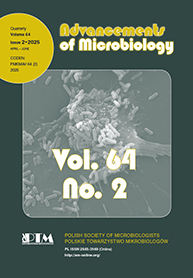Abstract: Malignant mesothelioma is a rare but highly aggressive cancer, with an incidence of approximately 1–2 cases per million per year in industrialized countries and a global annual mortality exceeding 30,000 cases. The disease is caused mainly by exposure to asbestos and is resistant to conventional treatment modalities, resulting in poor outcomes. Standard approaches include surgery, chemotherapy, and, more recently, immune checkpoint inhibitors. However, owing to the aggressive nature of cancer, the prognosis is poor, with limited treatment options. Globally, the disease accounts for more than 30,000 deaths annually. Current treatment efficacy remains suboptimal, particularly in advanced stages. Oncolytic virotherapy, especially adenovirus-based vectors, has emerged as a novel immunotherapeutic strategy with the potential to induce tumour lysis and stimulate antitumour immunity. This review summarizes the current treatment landscape for mesothelioma and highlights preclinical and early clinical findings on engineered oncolytic adenoviruses, particularly those expressing ICOSL, CD40L, and OX40L, and their promising synergistic effects with checkpoint blockade and chemotherapy. Furthermore, in this review, we present insights from clinical studies of the effects of adenovirus Ad5/3-D24-GM-CSF on mesothelioma and discuss promising avenues for future immunotherapy.
All posts by Anna Białecka
Abstract: Oral cancer, predominantly oral squamous cell carcinoma (OSCC), is a multifactorial disease influenced by genetic, environmental, and microbial factors. Among the emerging contributors to oral carcinogenesis, Fusobacterium nucleatum and Porphyromonas gingivalis, two Gram-negative anaerobic bacteria that reside in the human oral cavity as part of the normal microbiota, have gained attention for their pathogenic roles. Both species play key roles in periodontal disease and exhibit significant tumour-promoting activities through distinct and synergistic mechanisms. They modulate the tumor microenvironment by promoting the release of pro-inflammatory cytokines, facilitating immune evasion, and contributing to microbial dysbiosis. Clinical studies have identified their presence in OSCC tissues, correlating with advanced tumor stages, lymph node metastasis, and poor prognosis. Their involvement underscores the critical interplay between oral microbiota and host-pathogen interactions in cancer development. This review highlights the molecular mechanisms through which F. nucleatum and P. gingivalis contribute to oral carcinogenesis, emphasizing the need for further research to explore their diagnostic and therapeutic potential in oral cancer management. Addressing these microbial drivers could pave the way for innovative strategies in cancer prevention and treatment.
Abstract: The two-component NarLX signaling system is a key mechanism for bacterial adaptation to changing environmental conditions. Composed of a histidine kinase (NarX) and a response regulator (NarL), it enables bacteria to accurately detect and respond to environmental changes, particularly in nitrate and nitrite concentrations.
Studies on various bacterial species, including Escherichia coli, Salmonella enterica serovar Typhimurium and Pseudomonas aeruginosa, have shown that the NarLX system plays a fundamental role in anaerobic metabolism, biofilm formation, colonization ability and virulence. In E. coli, the system activates 51 operons and inhibits 41 of them, while in other species it affects key survival processes.
In the context of increasing antibiotic resistance, the NarLX system represents a promising therapeutic target. Potential strategies include the development of small-molecule inhibitors that could precisely modulate bacterial behavior without destroying the bacterial flora.
The research points to the possibility of developing innovative methods to combat bacterial infections, offering an alternative to traditional antibiotics and minimizing the risk of increasing bacterial resistance.
Abstract: Pancreatic cancer is one of the deadliest types of cancer and is still difficult to treat, despite recent medical advances. Many studies show correlations between the human oral and intestinal microbiota and pancreatic cancer. The mechanism of action of microorganisms on the pancreatic microenvironment is still not fully understood. The aspect of immune response related to treatment and the microorganisms present has also been addressed. This review presents current evidence on the human microbiota, mainly focusing on its bacterial contribution and influence, and identifies the areas that may benefit most from earlier diagnosis and the potential for less invasive treatment of pancreatic cancer. A review of all the latest literature (n=86) in peer-reviewed English-language journals with an Impact Factor from PubMed (NCBI) and Google Scholar was conducted; most studies concerned the analysis of bacteria in the human microbiota or in a mouse model.
Abstract: Bacteria use a variety of mechanisms in order to successfully survive in hosts. To support proliferation sophisticated means of maintenance in host especially metabolism of carbon and nitrogen is needed. One metabolic mechanism is the metabolism of amino sugars which are being used simultaneously as a carbon and nitrogen source. D-galactosamine (GalN) and N-acetyl-D-galactosamine (GalNAc) and their derivatives are widely used by bacteria. For instance, they build parts of cell wall and LPS. The metabolism of both amino sugars is performed and controlled by proteins encoded by aga genes, present in a wide variety of Proteobacteria. The genetic mechanism underlying this metabolic pathway is, however not yet fully known. Despite this, there is a possibility of using this pathway as a target for therapy, especially in the times of ever-growing danger of bacterial drug resistance. The goal of this article was to present the current knowledge of aga genes and their importance in GalN and GalNAc metabolism.

